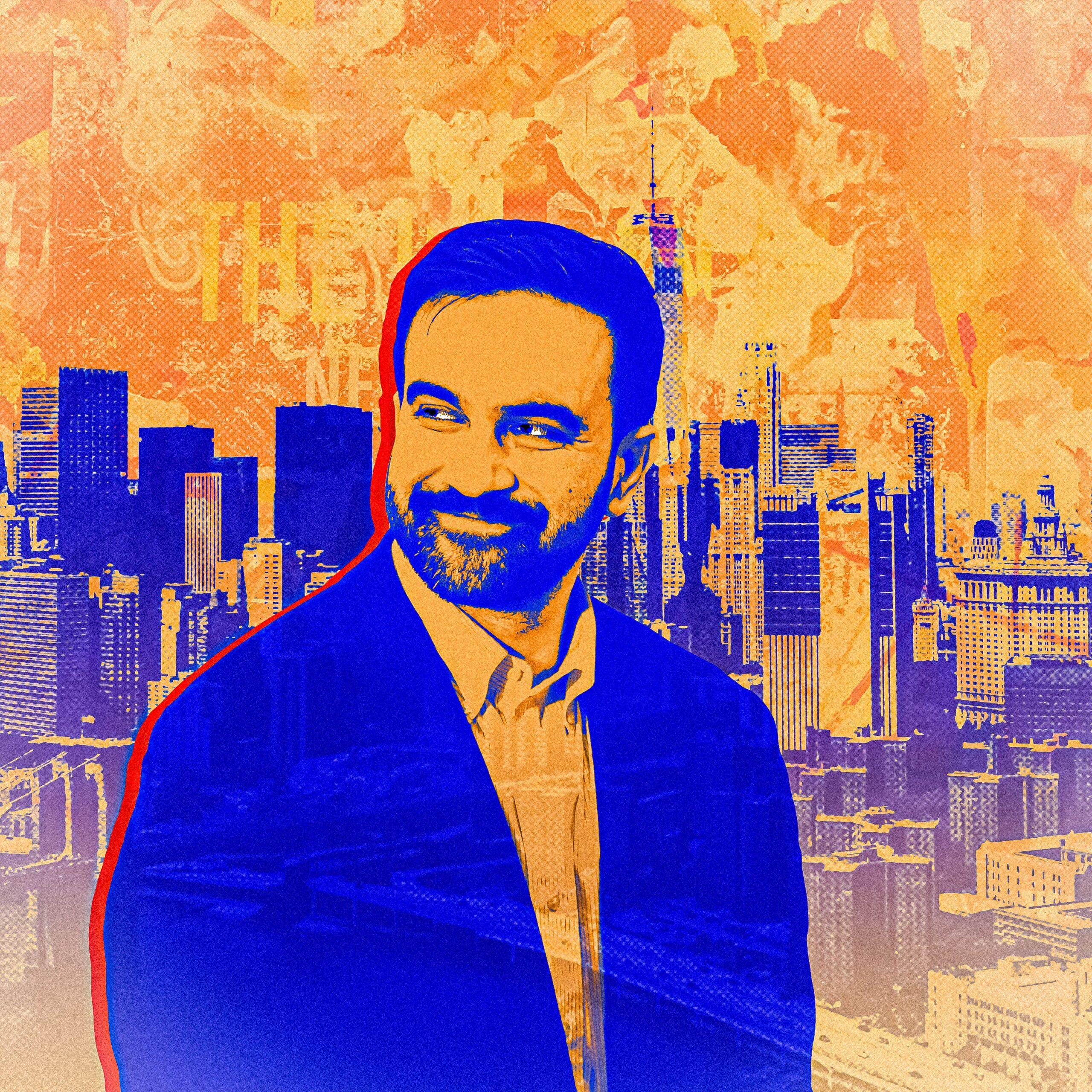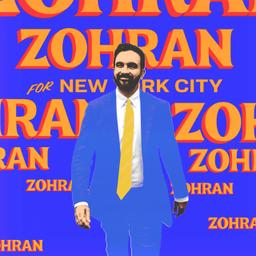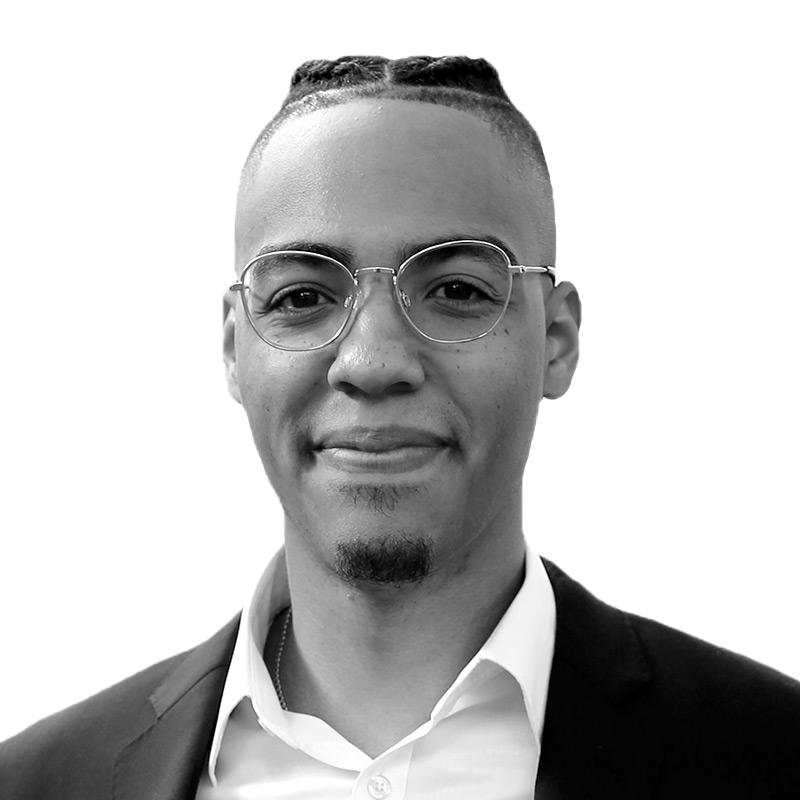
No notion repels me as a New Yorker quite like someone claiming to have an exact read on this place. You can, no doubt, really know New York—love it, hate it even. But there is no way to see into 8.5 million hearts and foretell their intentions at once. Ours is a city that sometimes lets its residents down, sometimes lifts them up, and often meets them in the middle. There’s never been a time when the public has been certain to do any one of those things. It chooses in the moment and re-chooses in the next.
On Tuesday night, proof of that inscrutability flooded out from polling stations across all five boroughs. By half past 9 locally, the 34-year-old democratic socialist candidate for mayor, Zohran Mamdani, was elected as the city’s 111th executive. At a celebratory gathering in Brooklyn, Mamdani—clad in a navy blue suit and sporting a freshly trimmed beard—referenced the early 1900s socialist presidential candidate Eugene Debs. He delivered one punch line in Arabic, another with an immaculate Spanish trill. Then he capped an acceptance speech with a notable promise: “In this moment of political darkness, New York will be the light.”
It marked the conclusion of perhaps the most improbable electoral rise in the history of the nation’s largest city. In late June, bolstered by a vast grassroots upswell and a savvy digital marketing operation, Mamdani blitzed the presumptive front-runner for the Democratic nomination, disgraced former governor Andrew Cuomo, to the tune of a 12.8 percent ranked-voting victory in the primary. This week—in a three-way general contest that again featured Cuomo as well as Republican nominee Curtis Sliwa—Mamdani built on those results and further expanded his coalition. With over 90 percent of votes counted by Wednesday morning, he’d upped his margin of victory by three points in Brooklyn and doubled it in Manhattan, and he flipped the Bronx with a stunning 12 percent lead. Where Mamdani had won with Hispanic voters by eight points but failed to capture a majority of Black voters in the primary, he won mostly Black precincts by an average of 26 points on Tuesday. Mamdani managed to do this while picking up a wave of working-class voters, including renters (by a 20 percent margin) and public transit riders (by a 29-point margin).
A wave of last-minute Cuomo endorsements from President Donald Trump and his acolytes failed to disrupt the upstart’s momentum. By the time this story was published, the registered ballots were already up to a little more than 2 million votes—the highest total since the late 1960s (another 185,000 ballots are still outstanding). A year ago, Mamdani wasn’t even polling in the Democratic primary; now, he is the first New York mayor to collect a million votes since John Lindsay in 1969.
He pulled it off because he’s both markedly of this time and informed by the fateful junctures that preceded it. There are many reasons why Mamdani is made for this moment, but none more crucial than his capacity to habitually glean insights from the epochs of this city that are most relevant to where his 8.5 million constituents find themselves today.

The conditions that allowed for Zohran’s ascent were fostered over decades that set the city toward a tipping point. Inequality and a lack of affordability, the twin plagues of our national age, have festered in a particularly devastating way in New York. According to data from the Bureau of Labor Statistics, the cost of rent in the city is up by 4.7 percent in 2025, compared with a 3.9 percent increase in the country as a whole. The same pattern applies to childcare and grocery costs: They are up 5.9 and 3.5 percent, respectively, in New York, compared with 3.5 percent and 2.2 percent across the U.S.
From 2011 to 2023, New York added almost 900,000 new jobs but responded by building just 350,000 new homes. From 2022 to 2023, wages rose citywide by an estimated 1.2 percent; rents increased by more than seven times that. During the period from 2019 to 2023, wage disparities between the top and bottom 20 percent of earners widened across the five boroughs while narrowing across the rest of the country.
The roots of the current crisis are overlapping and diffuse. A hodgepodge of austerity measures imposed in the 1970s and the city government’s overall lack of autonomy from the state hasn’t helped. New York, in general, still hasn’t recovered from the loss of wide-scale federal funding attached to both the New Deal and President Lyndon B. Johnson’s Great Society programs. The depletion of vast tax revenues caused by generations of urban flight further exacerbated the erosion of spending. Zoning limitations have curtailed the scale of building since the early 1960s, driving up prices in the housing market.

Part of the saliency of Mamdani’s campaign has been that its message is tailored to the realities of this impasse. His focus on affordability has never wavered. In March, when a reporter asked him about the historic nature of his candidacy to become New York’s first Muslim and Asian mayor, Mamdani’s response was “people cannot feed themselves and their family on someone looking like them.” He’s spoken repeatedly about “reclaiming the language of quality of life as a left-wing concern.”
Heading into the primary, his opponents bet that his pro-Palestinian advocacy and his failure to condemn others’ use of the phrase “globalize the intifada” would limit his popularity. Instead, they found an electorate that was not only undeterred by his push for Palestinian rights but was also increasingly embracing that very position. Where Mamdani’s detractors saw a charismatic neophyte, his supporters were drawn to his emphasis on leadership that “recognizes what they know and what they don’t.”Repeatedly, Mamdani demonstrated a willingness to engage in a brand of politics that was not reflected at a national scale on the left. He went viral for talking to Trump voters in New York after the presidential election. He sat down for an interview on Fox News. He convened meetings and listening sessions with the very business leaders and investors who propped up Cuomo’s (and Trump’s) two campaigns. He advocated first and foremost for prompt and measurable accomplishments. The three policy guiding lights of his campaign remained the same from winter to spring, summer to fall: a rent freeze on rent-stabilized units, a pilot program for city-owned grocery stores, and an increase in the number of buses and a change to make them free for all. “I care most about outcomes,” he told Derek Thompson on Plain English in June. “Being right in and of itself is meaningless. We have to win. And we have to deliver.” In a moment when many national leaders have been content to cede the stage to Trump, Mamdani centered his campaign on running toward something, making, in his words, “an affirmative case for what government can do.”
This case, as Zohran has himself pointed out, far predates his own candidacy. His rise has often been compared to the ascendance of three-term mayor Fiorello La Guardia, partly due to their comparative youth and partly due to their shared beliefs in socialism. La Guardia—who built the first public-housing complex in the nation, extended the subway, and constructed parks and playgrounds all over the city—is a clear influence on Mamdani’s rhetoric and political outlook. It’s not hard to see the through line from the Little Flower’s pledges to “abolish poverty” and ensure “justice that gives to everyone some chance for the beauty and the better things of life” to Mamdani’s statements on basic quality of life and the social safety net.
There are, no doubt, other inspirations, too. The 34-year-old’s refusal to back down on criticisms of the Israeli government has echoes of Barack Obama’s position as a senator on the U.S. invasion of Iraq; his emphasis on investment in infrastructure mirrors the agenda of Wisconsin's 20th-century sewer socialists; his embrace of economic populism would’ve put him in direct conversation with Senator Bernie Sanders and Representative Alexandria Ocasio-Cortez, with or without their outright endorsements. Even on a local level, Mamdani’s policy priorities aren’t unprecedented: The billionaire mayor Michael Bloomberg pushed to make crosstown buses free in the late aughts, and two-term mayor Bill de Blasio froze rents multiple times over his tenure.
The fashion in which Mamdani campaigned over the past year provides his candidacy with a distinctly modern air. His chosen platforms have ranged from TikTok to YouTube to the endless political podcast junket. In his own disseminations, he is most often captured via iPhone, usually with him facing the camera directly. The color tones tend to be warm. The vibes are irrepressibly humorous, quick, clear, and catchy. He’ll take the Coney Island cold plunge to announce he’s “freezing … your rent.” He’ll work his way onto a food cart to opine about “halalflation.”

Andrew Cuomo leaves the stage after delivering his concession speech
Rarely is Mamdani himself the main character of these dispatches. His lived experience speaks directly to his intended audience in a moment when many within that coalition are imperiled, yet he has rarely made those commonalities the centerpiece of his pitch, and he’s barely needed to even communicate them explicitly. Despite Mamdani’s digital fluency, the grassroots nature of his campaign orbited around old-school canvassing: Across both elections, his team and NYC’s branch of the Democratic Socialists for America amassed more than 50,000 volunteers and knocked on more than 1.6 million doors. Here, as with so much of his political profile, Zohran is a mix of old and new.
His path to successful governance in City Hall is not exactly gilded. Part of the challenge that Mamdani will now face is that he’s more constrained than any New York mayor in recent history in terms of raw power. An influx of federal funding is not coming through that door. Trump appears giddy at the prospect of picking a fight with the mayor-elect in which congressionally appropriated funding is the collateral. After calling Mamdani a “communist” for the 50-leventh time on Monday, Trump announced that “it is highly unlikely that I will be contributing Federal Funds, other than the very minimum as required,” to the city. And even when he had a more pliable figurehead in Gracie Mansion, Trump had repeatedly instructed his subordinates to attempt to withhold funding during the last year.
Mamdani will also have to contend with the pushback he’s received from the Democratic establishment, ranging from delayed endorsements to refusals of support to local colleagues saying that he and the DSA should “create their own party.” There have also been waves of veiled and not so veiled Islamophobia, as when the state’s junior U.S. senator falsely claimed that Mamdani had made past “references to global jihad.” A spot at City Hall alone is unlikely to diminish Mamdani’s persistent back-page coverage, and it is also not a guarantee that New York Times coverage will be softened after the paper ran an editorial that sidestepped its own endorsement policy to warn readers, “We do not believe that Mr. Mamdani deserves a spot on New Yorkers’ ballots.” Much of the success of Mamdani’s administration will be dependent on convincing the state to fund his works or applying enough political pressure on the folks in state governance that they’ll fear a potential loss of office more than a reinvigorated social safety net.
Despite all of the groundbreaking features of Mamdani’s rise, there is and will continue to be a tension at the core of his career that has long been fundamental to New York. Is this the city that asks—as its defining idol proclaims—for the world’s tired, poor, huddled masses, that offers a flat transit rate, that shelters migrants, that devotes 843 acres to a communal park, that is a racial and ethnic melting pot? Or is it a city of slave markets turned into stock markets, of tenements face-lifted into overpriced walk-ups, of public education programs parceled out and segregated into elite subdivisions? What Mamdani has run on is that, yes, this tension still exists today, but it doesn’t have to. That the city, like the nation it heralds, “is beautiful, contradictory, unfinished.”
There have been times when New York has chosen the collective path over the private one. Perhaps this is one of those. Anyone who’s certain, in either direction, is bluffing.



